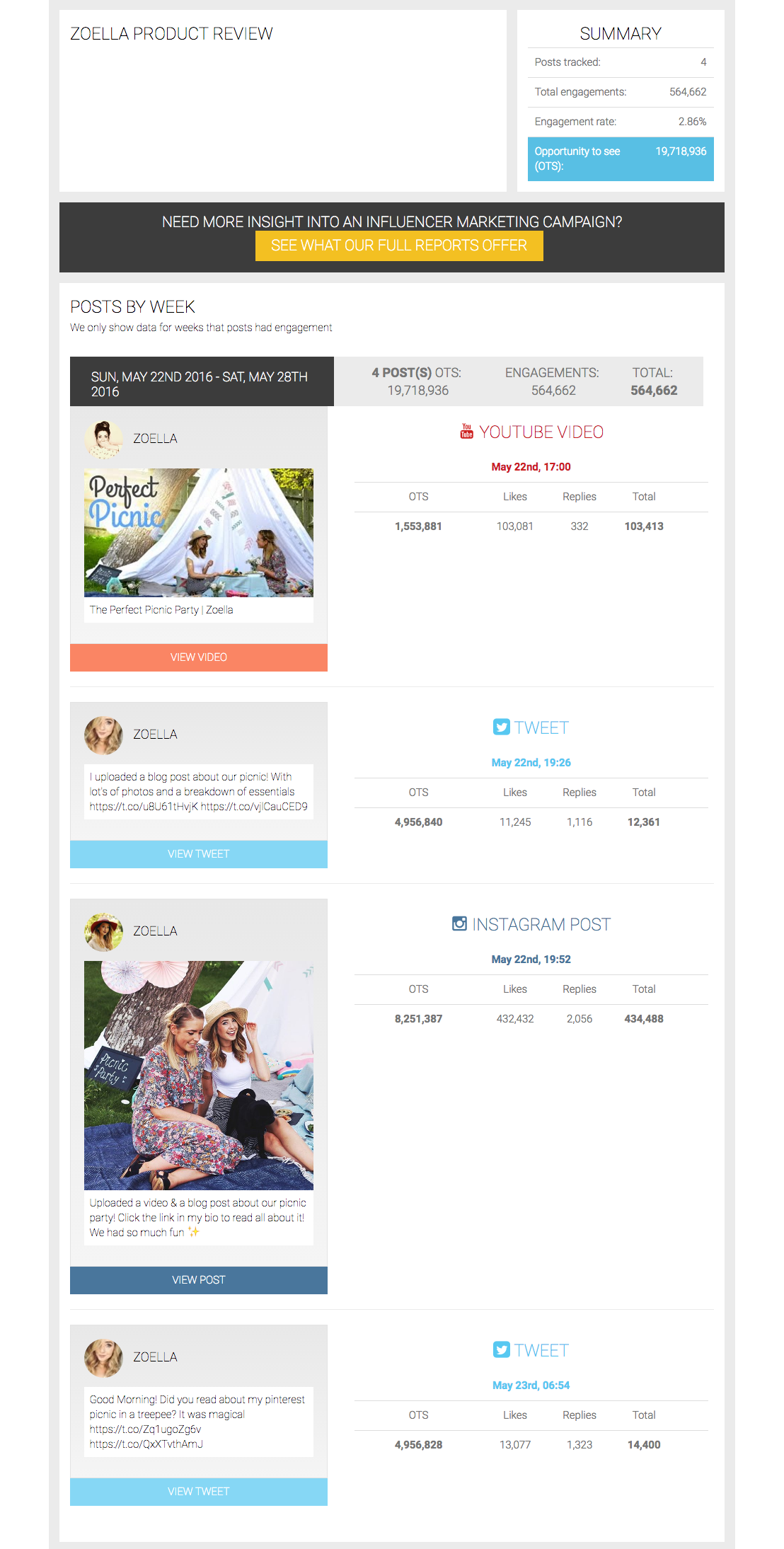In the above-mentioned case, not only did the blogger influence the woman’s decision to buy the mat, but she also got her to talk about it online, further contributing to the digital conversation around the product.The fact that the influencer got her to get into her car and rush to the stores for something as boring as a doormat is remarkable.
Another article discussed how beauty vloggers have become more influential and credible than top makeup artists. By having daily interaction and engagement with their fan base, these vloggers/bloggers have a significant influence on the purchasing decisions of their followers. A great example would be Zoella, fashionbi explained how after mentioning a Topshop blusher in one of her blog posts, there was a 40% click through rate to the brand’s site. With vloggers/bloggers providing brands with a significant return on investment, there is no doubt that they have helped smart brands embrace the digital potential of influencer marketing.
Through influencer marketing, brands are able to connect with the right target audiences in a much more organic way. By using social media, as well as native advertising and influencer marketing, brands are able to take advantage of predominant industry trends - for example the shift from TV to digital, display advertising to sponsored content, and online video traffic. Essentially, influencer marketing is a term that separates successful brands from those being left behind.
While traditional advertising models embrace concepts such as celebrity endorsements, we are living in a digital world where popular vloggers, bloggers and social influencers have more influence on the purchasing decisions of consumers, than celebrities. This could be that a lifestyle similar to that of a blogger/vlogger seems more attainable than trying to keep up with the lifestyle of a celebrity. We see our favourite vloggers/bloggers as ordinary people, as our peers rather than someone superior to us and our lifestyle.
But how can this all be measured? At the end of the day brands need to see a return on investment and influencers need to be able to prove to brands that their marketing efforts were, in fact, successful.
To allow influencers to show brands the success of their work and campaigns featuring their brands, Webfluential provides influencers with the tools to accurately track, measure and report on an online campaign. Brands can see whether the influencer did in fact meet the brand’s objectives. By simply inputting the links of social posts, YouTube videos, blog posts, Tweets, Instagram and Facebook posts, the tool is able to track a host of data. The tool tracks the number of posts published, total engagements and how many people had the opportunity to see the posts.
To test the tool on a vlogger’s post I added some social posts into the report. Have a look at what I found:

